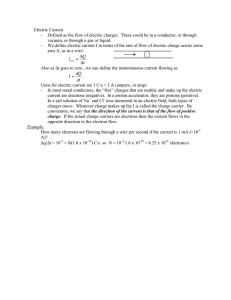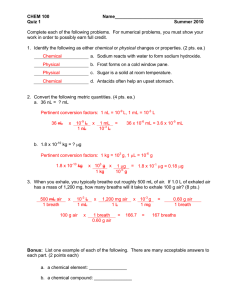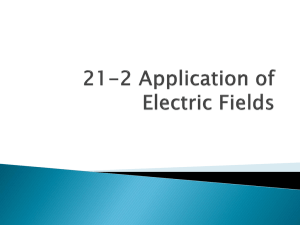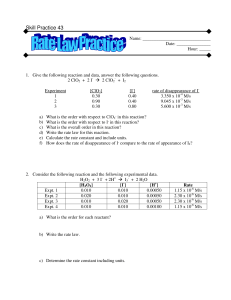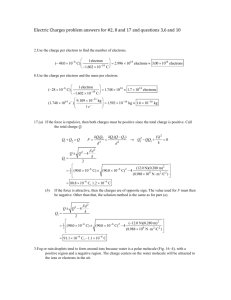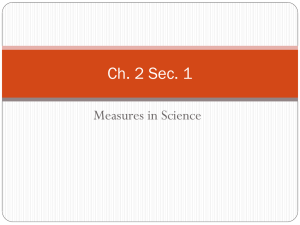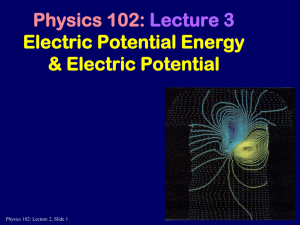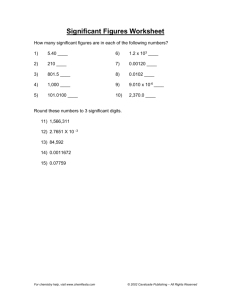q = -8 x 10
advertisement
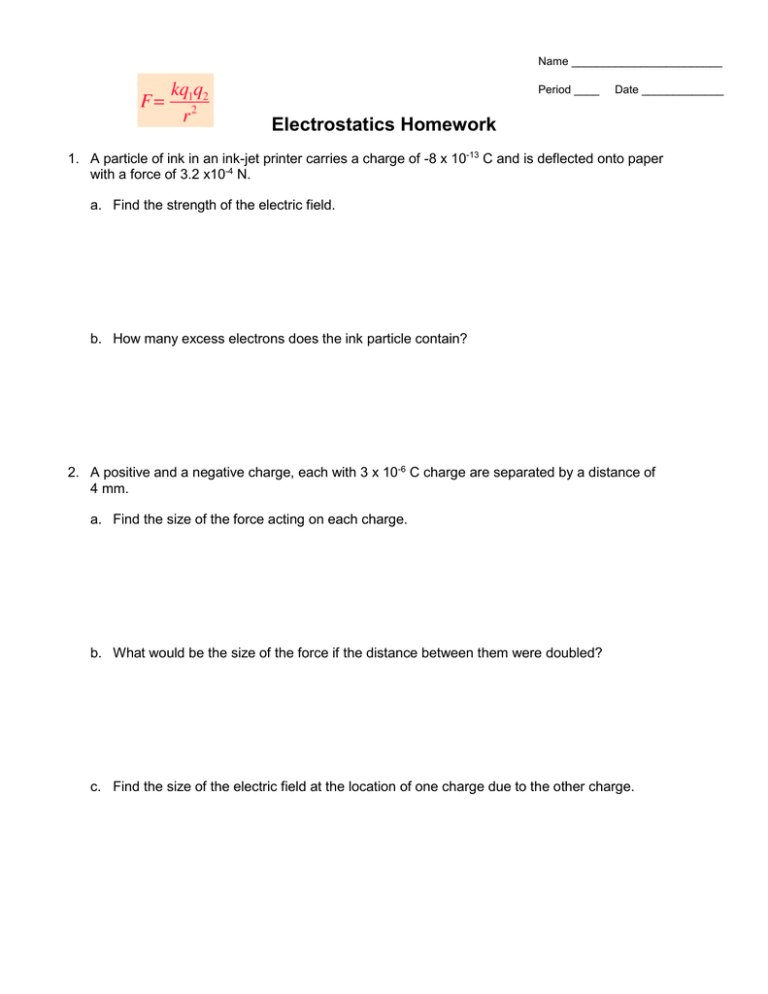
KEY Name ________________________ Period ____ KEY Date _____________ Electrostatics Homework 1. A particle of ink in an ink-jet printer carries a charge of -8 x 10-13 C and is deflected onto paper with a force of 3.2 x10-4 N. a. Find the strength of the electric field. q = -8 x 10-13 C F = 3.2 x10-4 N E = F/q = 3.2 x10-4 N/-8 x 10-13 C = 4 x 108 N/C The question asks for the magnitude only but the direction of the e field is away from the paper. b. How many excess electrons does the ink particle contain? Q=Ne where Q is the total charge, N is the number of electrons and e is the electronic charge 1.6 x 10-19C N = Q/e = (8x10-13 C) / (1.6 x 10-19 C) = 5 x 106 electrons 2. A positive and a negative charge, each with 3 x 10-6 C charge are separated by a distance of 4 mm. a. Find the size of the force acting on each charge. q1 = - q2 = 3 x 10-6 C r = 4 x 10-3 m F = -(9 x 109)(3 x 10-6)2 / (4 x 10-3)2 = - 5.06 x 103 N They will attract each other b. What would be the size of the force if the distance between them were doubled? If the distance were doubled, the force would be smaller by a factor of 4 (22) F = 1.27 x 103 N c. Find the size of the electric field at the location of one charge due to the other charge. E = F/q = (5.06 x 103 N) / (3 x 10-6 C) = 1.69 x 109 N/C d. Find the potential energy of the charge pair. What is the significance of the sign of the energy? U = -(9x109)(3x10-6)2 / (4x10-3) = - 20.25 Joules The sign indicates that it takes energy to separate the charges. e. Find the potential difference (V) at the midway point between the charges. From the symmetry of the problem, the potential difference is zero at the midpoint because the charges are equal and opposite and distances are equal. f. If a positive charge of 8 x 10-13 C is placed midway between the charges, what would be the force on that charge? q1 = - q2 = 3 x 10-6 C q3 = 8 x 10-13 C r13 = r23 = 2 x 10-3 m E3 = k [q1 / r122 + q2 / r232 ] = 2 k (q1 / r2 ) = 2 (9x109) (3x10-6) / (2x10-3)2 = 1.35 x 1010 N/C F = q3 E3 = (8x10-13)(1.35x1010) = 1.1 x 10-2 N 3. In the Millikan oil drop experiment the experiment was performed within a parallel plate capacitor. If the plate separation was 3.1 mm and the potential difference across the plates was 1000V. What was the electric field in the experiment region? d = 3.1 x 10-3 m V = 1000V E = V/d = (1000) / (3.1x10-3) = 3.22 x 105 N/C Helpful Formulas and Numbers: Coulomb’s Law: F= Electric Field: E= Electrostatic PE: U= Potential Difference: V= k q1 q2 r2 k q1 F = 2 r q2 k q1 q2 r k q1 r k = 9.0 x 109 N m2 / C2 e = ±1.6 x 10-19 C / particle q = Ne
